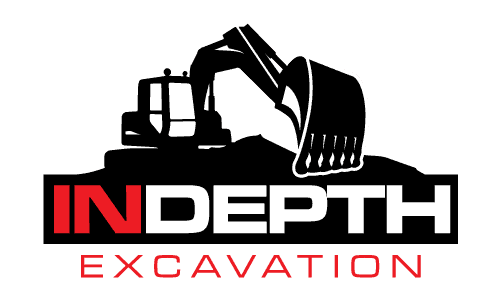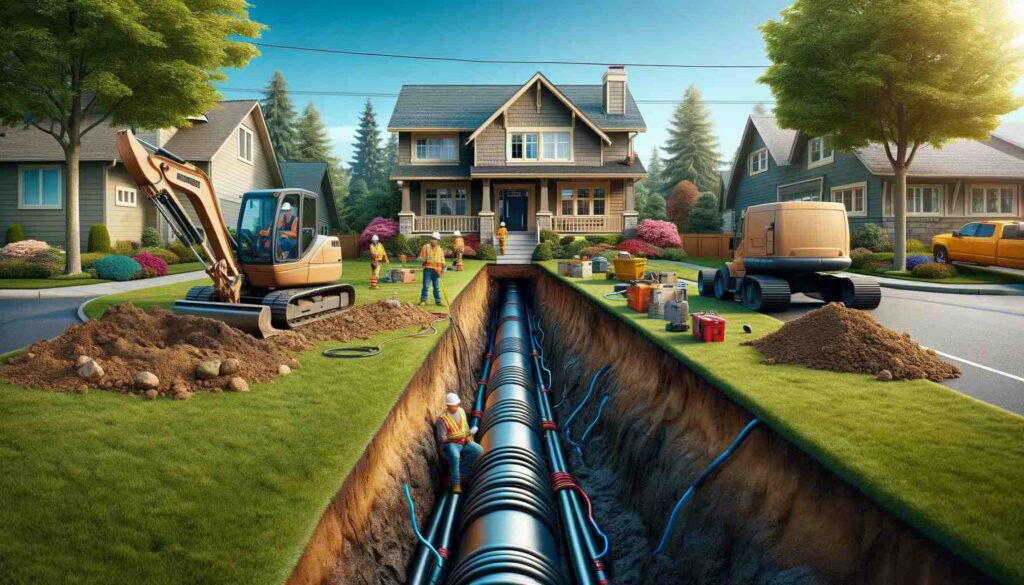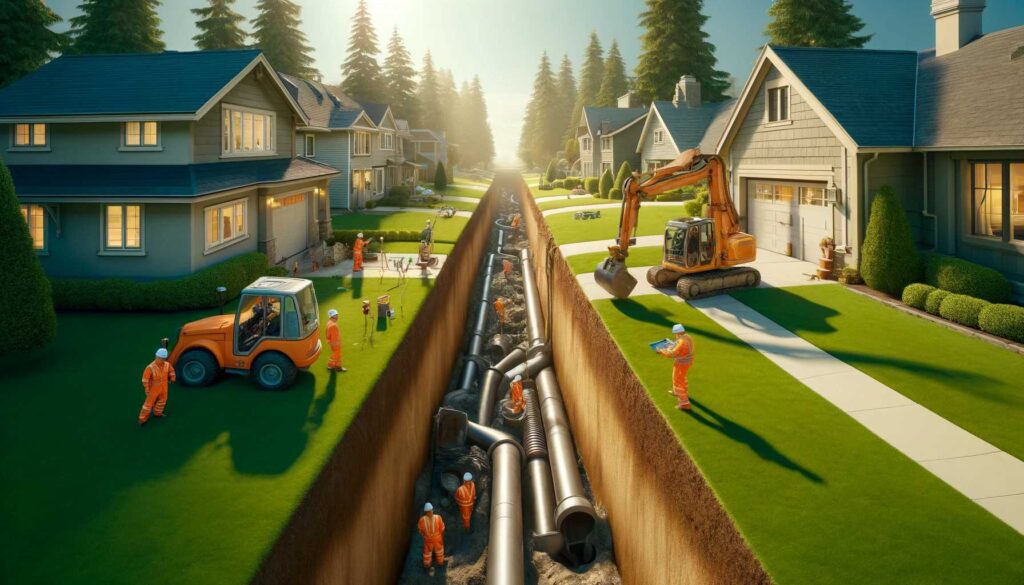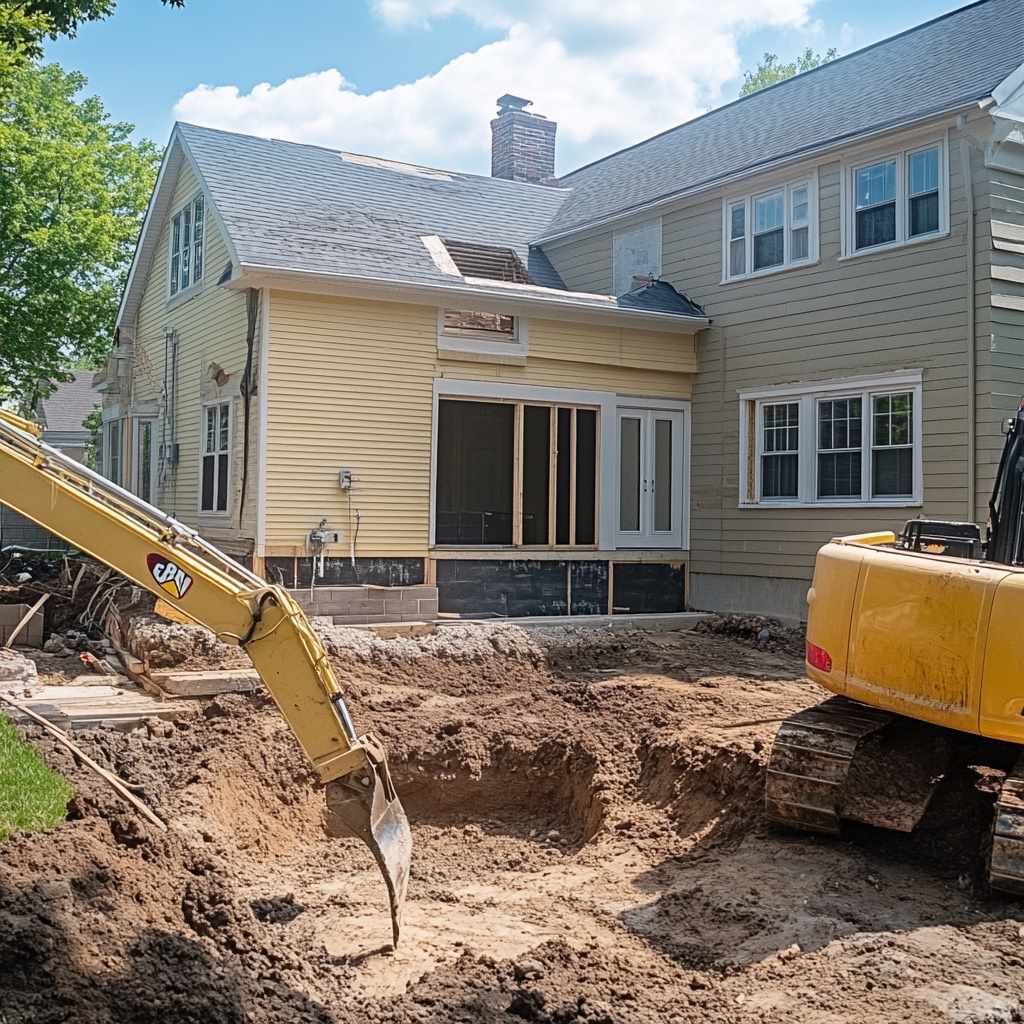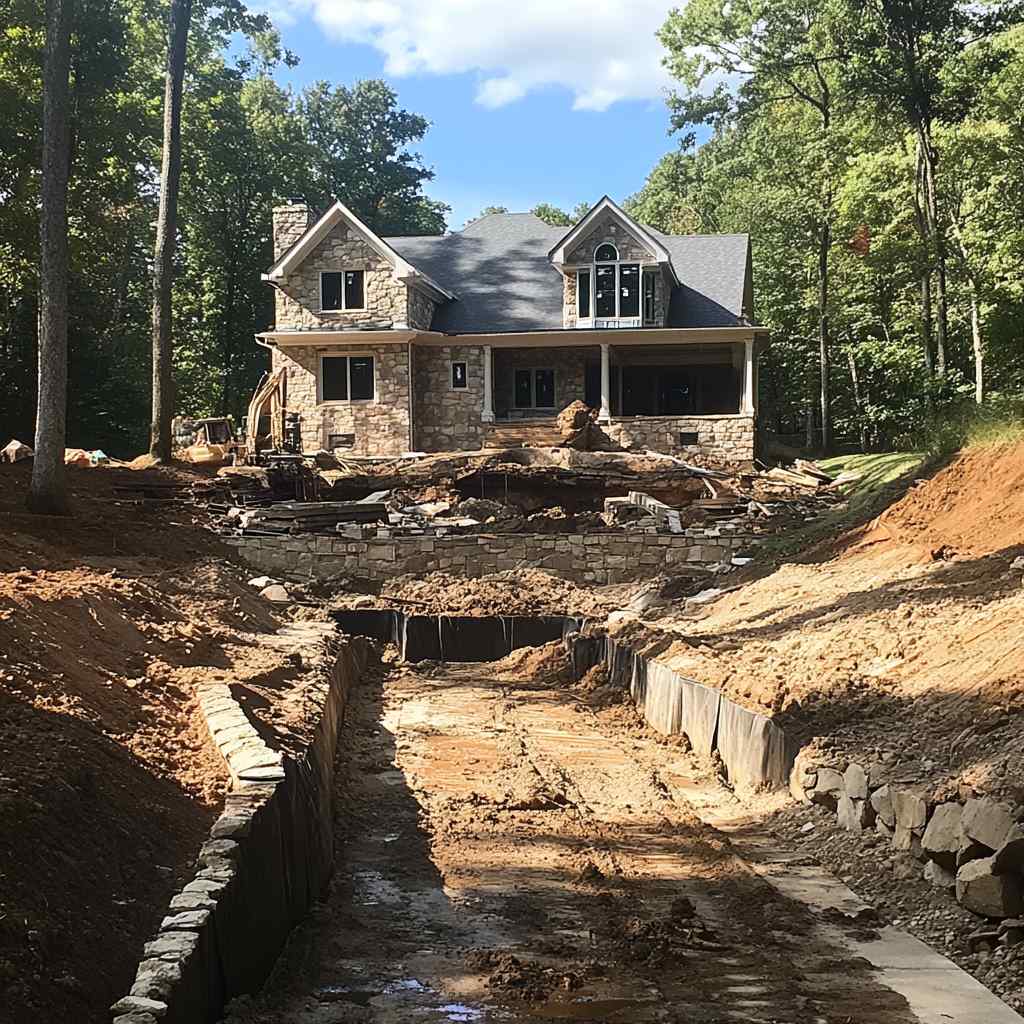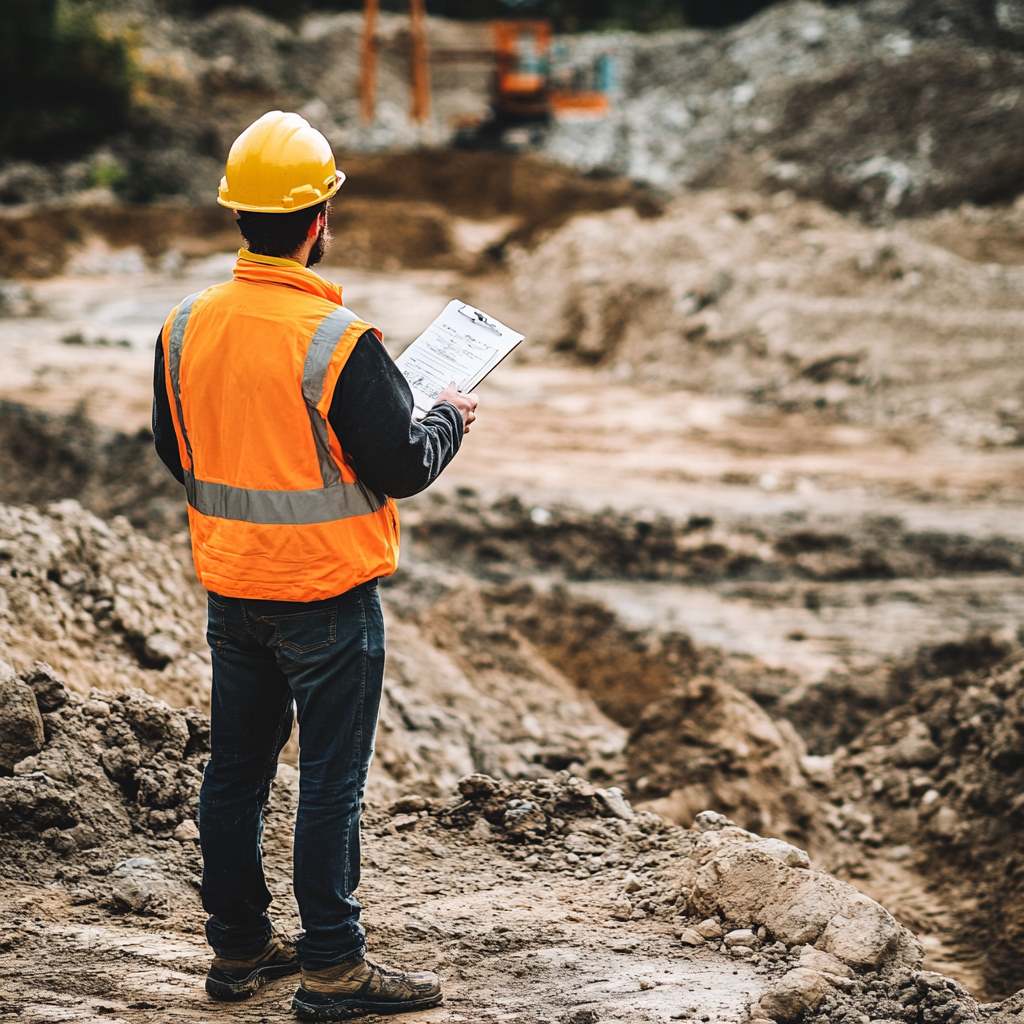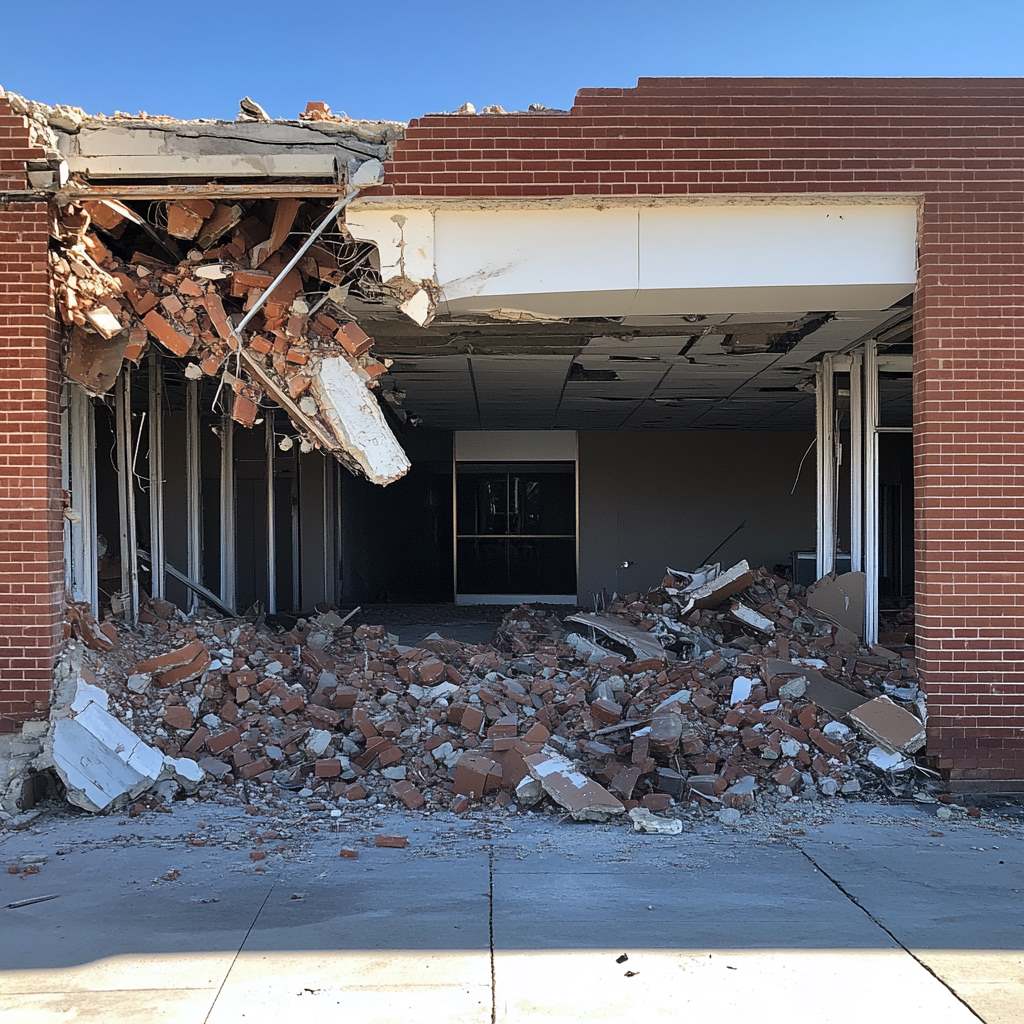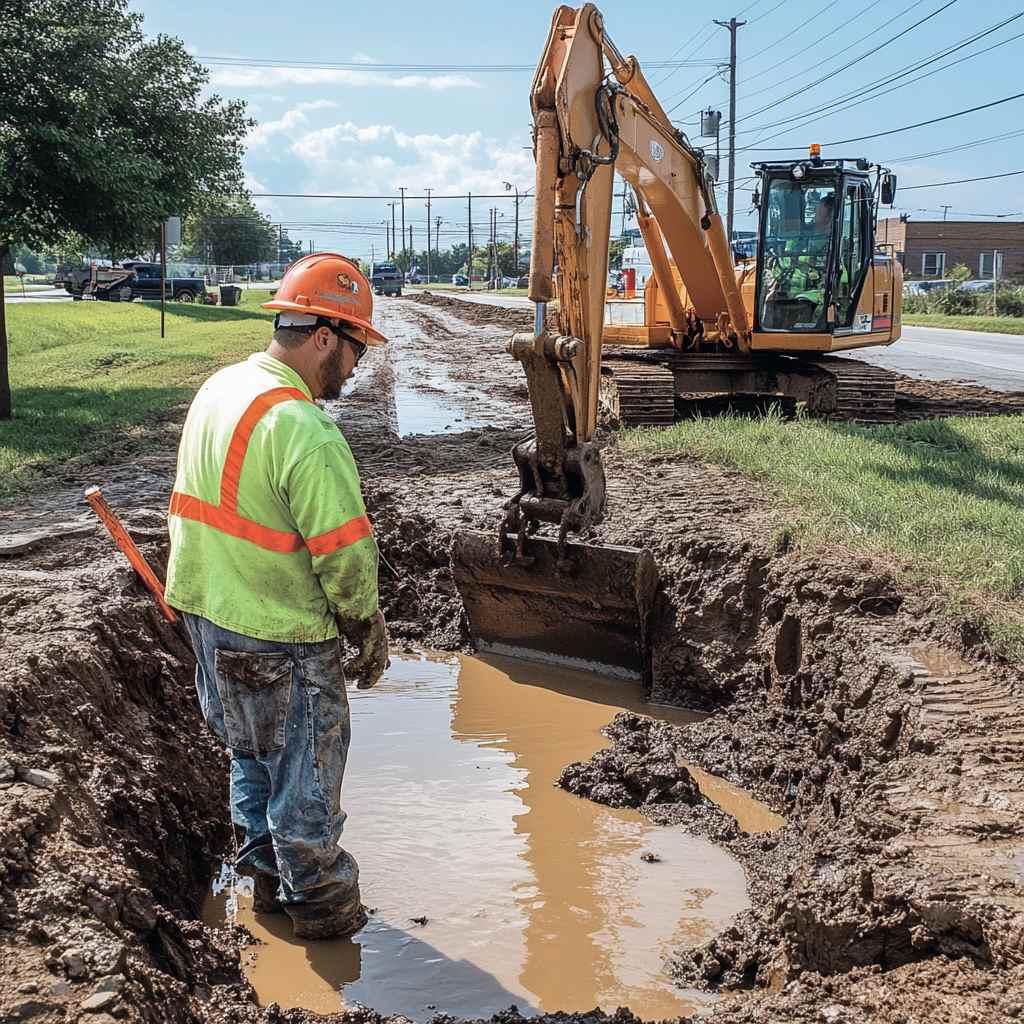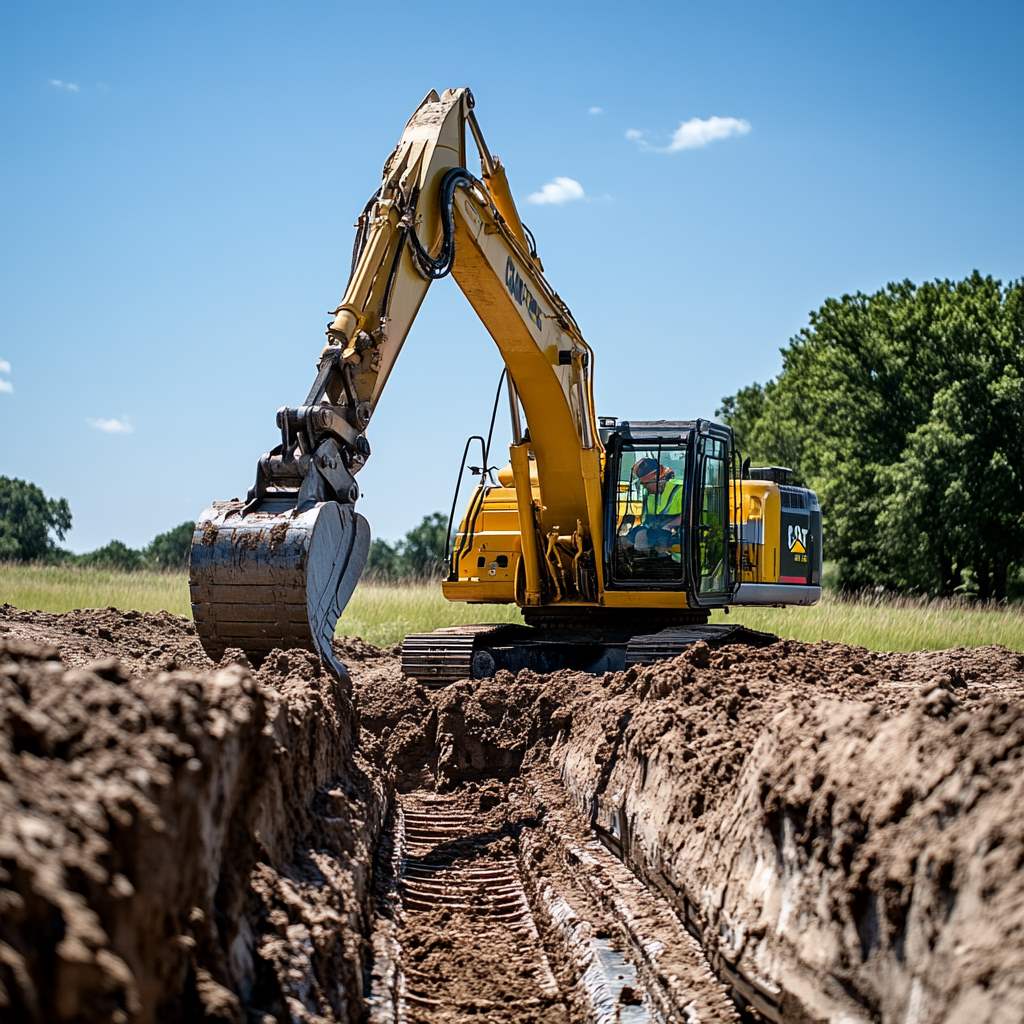Replacing a sewer line is a significant but sometimes necessary project to maintain the health and functionality of your home. In Snohomish County, this process involves understanding why replacement is needed, recognizing the signs of damage, and knowing the steps involved in replacing the line. In-Depth Excavation, your local trusted experts, want to help give you a clear understanding of your Sewer Services. Let’s dive into the details.
Key Takeaways:
- Sewer lines transport wastewater from homes to the main sewer system.
- They are crucial for maintaining hygiene and preventing sewage-related issues.
What Is a Sewer Line in Snohomish County?
A sewer line is an underground pipe system that carries wastewater from your home to the main sewer system or septic tank. These lines are essential for the proper disposal of sewage and maintaining a sanitary living environment. Typically made from materials like clay, cast iron, or PVC, these pipes are designed to handle the flow of waste from your household.
Why Would You Need to Replace Your Sewer Line in Snohomish County?
Replacing a sewer line may be necessary due to various factors such as aging infrastructure, damage from external sources, or persistent issues that cannot be resolved by simple repairs. Common reasons for replacement include:
- Aging Infrastructure: Older pipes made from materials like clay or cast iron can deteriorate over time, leading to cracks, leaks, and eventual failure.
- Persistent Blockages: Frequent clogs that can’t be cleared by conventional means might indicate a significant problem with the sewer line itself.
- Sewer Line Collapse: Ground shifts or construction activities can cause the sewer line to collapse, necessitating a complete replacement.
Signs Your Sewer Line Needs Replacing
1. Frequent Clogs
Regular blockages that require constant attention might indicate severe issues within the sewer line. If you find yourself frequently dealing with clogs despite your best efforts to maintain clear pipes, it may be time to inspect your sewer line for deeper issues.
2. Slow Draining
If your sinks, tubs, or toilets are draining slowly despite efforts to clear them, it could signal a deeper problem in the sewer line. This sluggish draining often points to obstructions or damage in the sewer line that hinder the smooth flow of wastewater.
3. Foul Odors
Unpleasant smells coming from your drains or around your property can be a sign of sewer line damage. These odors are typically caused by sewage leaks that allow wastewater to escape into the surrounding soil, creating an unsanitary environment.
4. Sewage Backup
The most severe indication is sewage backing up into your home, which poses significant health risks and requires immediate attention. Sewage backups can occur when the sewer line is blocked or damaged, preventing waste from flowing to the main sewer system.
Causes of Sewer Line Damage in Snohomish County
1. Tree Root Infiltration
Tree roots can grow into and damage sewer lines, leading to blockages and leaks. Roots naturally seek out moisture, and sewer lines can provide a consistent water source, causing roots to invade and eventually break the pipes.
2. Old Age
Over time, sewer lines can deteriorate and become prone to cracks, leaks, and collapses. Materials like clay and cast iron, commonly used in older systems, are especially susceptible to wear and tear over decades of use.
3. Ground Shifting
Shifts in the ground due to natural or man-made causes can damage sewer lines. Soil erosion, earthquakes, and nearby construction activities can cause the ground to move, putting stress on the pipes and leading to cracks or breaks.
How to Replace a Sewer Line in Snohomish County
1. Inspection and Planning
A thorough inspection using cameras helps identify the extent of the damage and plan the replacement process. This step involves using a sewer camera to pinpoint the exact location and nature of the problem, allowing for a targeted and efficient approach.
2. Obtaining Permits
Replacing a sewer line requires permits from local authorities to ensure the work meets safety and environmental standards. This step is crucial to comply with local regulations and avoid potential fines or legal issues.
3. Excavation
The damaged sewer line is accessed through excavation, ensuring minimal disruption to your property. Depending on the method chosen, this could involve digging a trench along the path of the sewer line or using trenchless technology for a less invasive approach.
4. Installation of New Line
A new sewer line is installed, ensuring it meets all local codes and standards. This step involves carefully laying the new pipe, connecting it to the existing system, and ensuring it is properly aligned and secure.
5. Backfilling and Restoration
The excavation site is backfilled, and the area is restored to its original state as much as possible. This includes compacting the soil to prevent future settling and repairing any landscaping or hardscaping affected by the work.
Types of Sewer Line Replacement
1. Traditional Excavation
Involves digging a trench to access and replace the entire sewer line. This method is reliable but can be disruptive and time-consuming. It’s often used when the sewer line is severely damaged and requires a complete overhaul.
2. Trenchless Sewer Line Replacement
This less invasive method involves minimal digging and uses techniques like pipe lining to replace the sewer line. Trenchless methods are faster, less disruptive, and often more cost-effective than traditional excavation.
3. Pipe Bursting
Involves breaking the old pipe and pulling a new pipe into place through the same space, reducing excavation needs. This method is particularly useful when the existing pipe is too damaged for lining but the surrounding area needs minimal disturbance.
Cost to Replace a Sewer Line in Snohomish County
The cost varies based on factors such as the length of the sewer line, the method of replacement, and any complications encountered during the process. Traditional excavation tends to be more expensive due to the labor and time involved, while trenchless methods can offer significant savings.
Time to Replace a Sewer Line in Snohomish County
The time required depends on the extent of the damage and the replacement method used. Traditional excavation may take longer compared to trenchless methods, which can often be completed in a matter of days.
Ready to get started with In-Depth?
For professional assistance with sewer line replacement in Snohomish County, especially in areas like Arlington, Washington, Contact Us at In-depth Excavation. Our experienced team will guide you through every step of the process, from planning and permitting to execution and restoration. We are committed to delivering efficient, effective, and minimally disruptive sewer line replacement services to keep your home’s plumbing system running smoothly. Whether you are in Arlington, Washington, or another part of Snohomish County, we are here to help with all your sewer line replacement needs.
Phone: (425)367-1521
Email: [email protected]
FAQ: Sewer Line Replacement in Snohomish County
Look for signs such as frequent clogs, slow drains, foul odors, and sewage backups. If you experience any of these issues consistently, it’s a good idea to have your sewer line inspected by a professional.
Common causes include tree root infiltration, old age, and ground shifting. These factors can lead to cracks, leaks, and even collapses in the sewer line, necessitating replacement.
The process typically involves:
- Inspection and Planning: Using cameras to assess damage and plan the replacement.
- Obtaining Permits: Securing necessary permits from local authorities.
- Excavation: Accessing the damaged line through digging or trenchless methods.
- Installation of New Line: Installing the new sewer line to meet local codes.
- Backfilling and Restoration: Restoring the excavation site to its original state.
There are three main methods:
- Traditional Excavation: Digging a trench to replace the entire sewer line.
- Trenchless Sewer Line Replacement: Minimal digging, often using pipe lining techniques.
- Pipe Bursting: Breaking the old pipe and pulling a new one into place.
Costs vary based on factors like the length of the line and the method used. Traditional excavation is usually more expensive than trenchless methods. The time required also depends on these factors, with trenchless methods typically being faster, often completed within a few days. For a detailed estimate, it’s best to consult with a professional service like In-depth Excavation.
